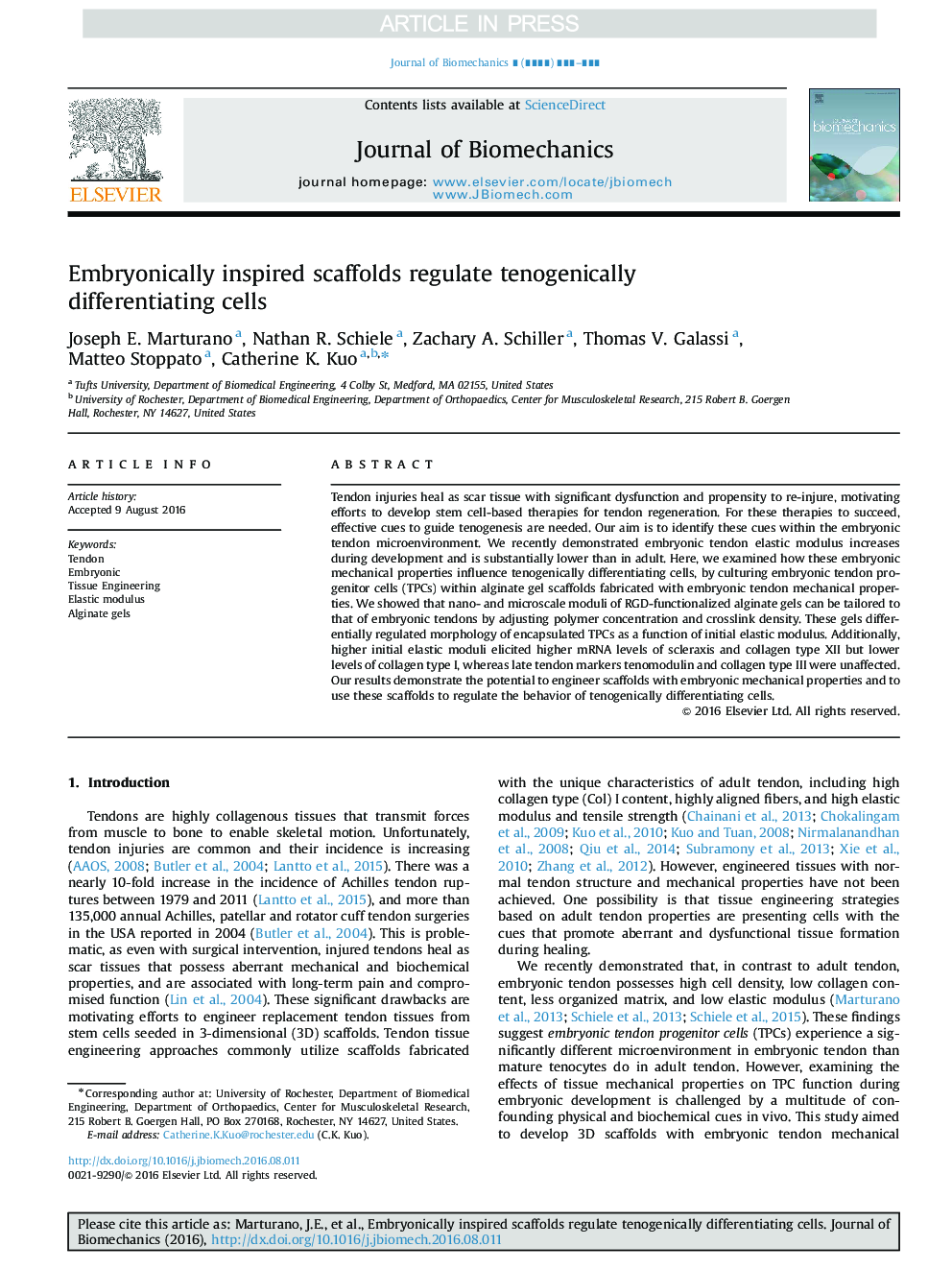| Article ID | Journal | Published Year | Pages | File Type |
|---|---|---|---|---|
| 5032532 | Journal of Biomechanics | 2016 | 8 Pages |
Abstract
Tendon injuries heal as scar tissue with significant dysfunction and propensity to re-injure, motivating efforts to develop stem cell-based therapies for tendon regeneration. For these therapies to succeed, effective cues to guide tenogenesis are needed. Our aim is to identify these cues within the embryonic tendon microenvironment. We recently demonstrated embryonic tendon elastic modulus increases during development and is substantially lower than in adult. Here, we examined how these embryonic mechanical properties influence tenogenically differentiating cells, by culturing embryonic tendon progenitor cells (TPCs) within alginate gel scaffolds fabricated with embryonic tendon mechanical properties. We showed that nano- and microscale moduli of RGD-functionalized alginate gels can be tailored to that of embryonic tendons by adjusting polymer concentration and crosslink density. These gels differentially regulated morphology of encapsulated TPCs as a function of initial elastic modulus. Additionally, higher initial elastic moduli elicited higher mRNA levels of scleraxis and collagen type XII but lower levels of collagen type I, whereas late tendon markers tenomodulin and collagen type III were unaffected. Our results demonstrate the potential to engineer scaffolds with embryonic mechanical properties and to use these scaffolds to regulate the behavior of tenogenically differentiating cells.
Related Topics
Physical Sciences and Engineering
Engineering
Biomedical Engineering
Authors
Joseph E. Marturano, Nathan R. Schiele, Zachary A. Schiller, Thomas V. Galassi, Matteo Stoppato, Catherine K. Kuo,
